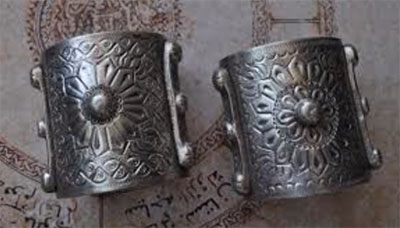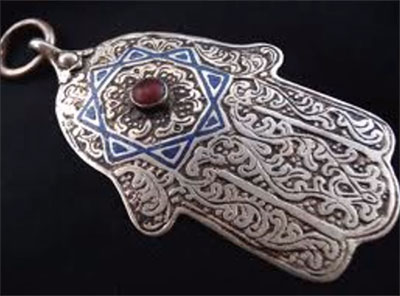 Moroccan women love jewelry. And always have. But Moroccan gold and silver pieces, adorned with precious and semi-precious stones, aren’t just the means to add some chic to the outfit, they are being used as a personal fund of a woman. It all started when banks weren’t as popular and trustworthy as they are now, so people searched for ways to store money and pass the heritage from one generation to the next. High-quality jewelry fits perfectly into this scheme.
Moroccan women love jewelry. And always have. But Moroccan gold and silver pieces, adorned with precious and semi-precious stones, aren’t just the means to add some chic to the outfit, they are being used as a personal fund of a woman. It all started when banks weren’t as popular and trustworthy as they are now, so people searched for ways to store money and pass the heritage from one generation to the next. High-quality jewelry fits perfectly into this scheme.
For generations, Moroccan women used gold and silver jewels as an alternative to a personal bank account. And the form factor of these jewelry items only helps, as they are massive, elaborate, and skillfully made from costly materials, which means that they are expensive. There is even sort of a tradition for Moroccan women to check the market for vintage traditional jewelry once in a while and buy the pieces when the price is good.

As jewels are traditionally passed from mothers and grandmothers to daughters, authentic Moroccan jewelry is often stored in jewelry boxes of families all over the country. And most importantly, these women usually know the history of every piece passed to them and are emotionally attached to their collection. They get their precious jewels out from time to time and tell their stories to daughters, relatives, or female friends.

Antique Moroccan jewels have a very specific looks, they can’t be worn casually, with day-to-day clothes. So, most women wear them only for their wedding or a similar significant occasion and then just keep them in a jewelry box. With casual everyday garments, they use much simpler modern pieces.
Types of Moroccan jewelry
Traditional jewelry pieces in Morocco have certain designs and typical features, which depend on the region, influence of other countries, the skill and taste of a jewelry maker, available materials, and so on.
Here are a few typical Moroccan traditional jewelry items:
- Moroccan beaded necklaces – they consist of many, many rows of various beads (pearls, coral, gems, amber, silver beads, etc). They can cover the neck and chest of a woman, sometimes down to her stomach. Of course, such necklaces aren’t worn in everyday life, only for weddings and other important occasions;
- Khamsa jewels (Eye of Fatima or Hand of Fatima) – this symbol is very popular in Morocco. It is used everywhere in jewelry – as a pendant, in necklaces, in earrings, in bracelets, etc. Moroccans believe that the Hand of Fatima works as protection from evil. This symbol can be tiny or massive (up to 10 cm long);
- wide silver bracelets – these jewels are extremely popular among Moroccan women. Usually, they are wide and richly embellished or there can be a number of smaller bracelets worn together to cover the wrists. Sometimes, gold bracelets are used, but silver ones are more widespread;
- massive Berber necklaces – they are usually made from silver, large coral or amber beads, and other smaller gems. These necklaces are very expensive because the materials are natural, and also, these adornments are practically always copious;
- head adornments – Moroccan women often embellish their headdresses with eye-catching jewelry sets. They often include pendants that dangle and sparkle when the head moves and long temple adornments;
- different other jewelry pieces, massive and opulent.
Photos from: https://www.youtube.com/watch?v=3qagko9NEfc


